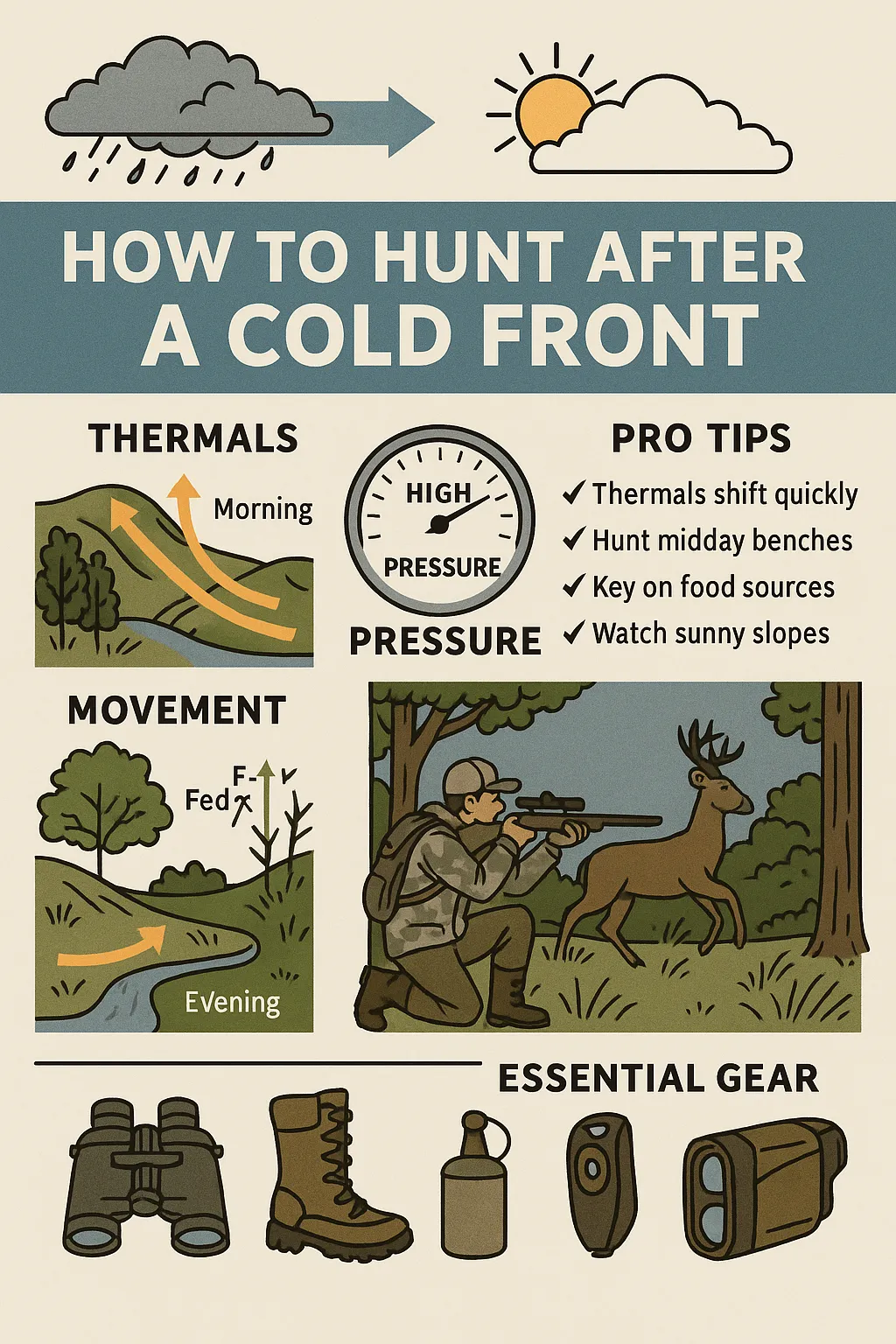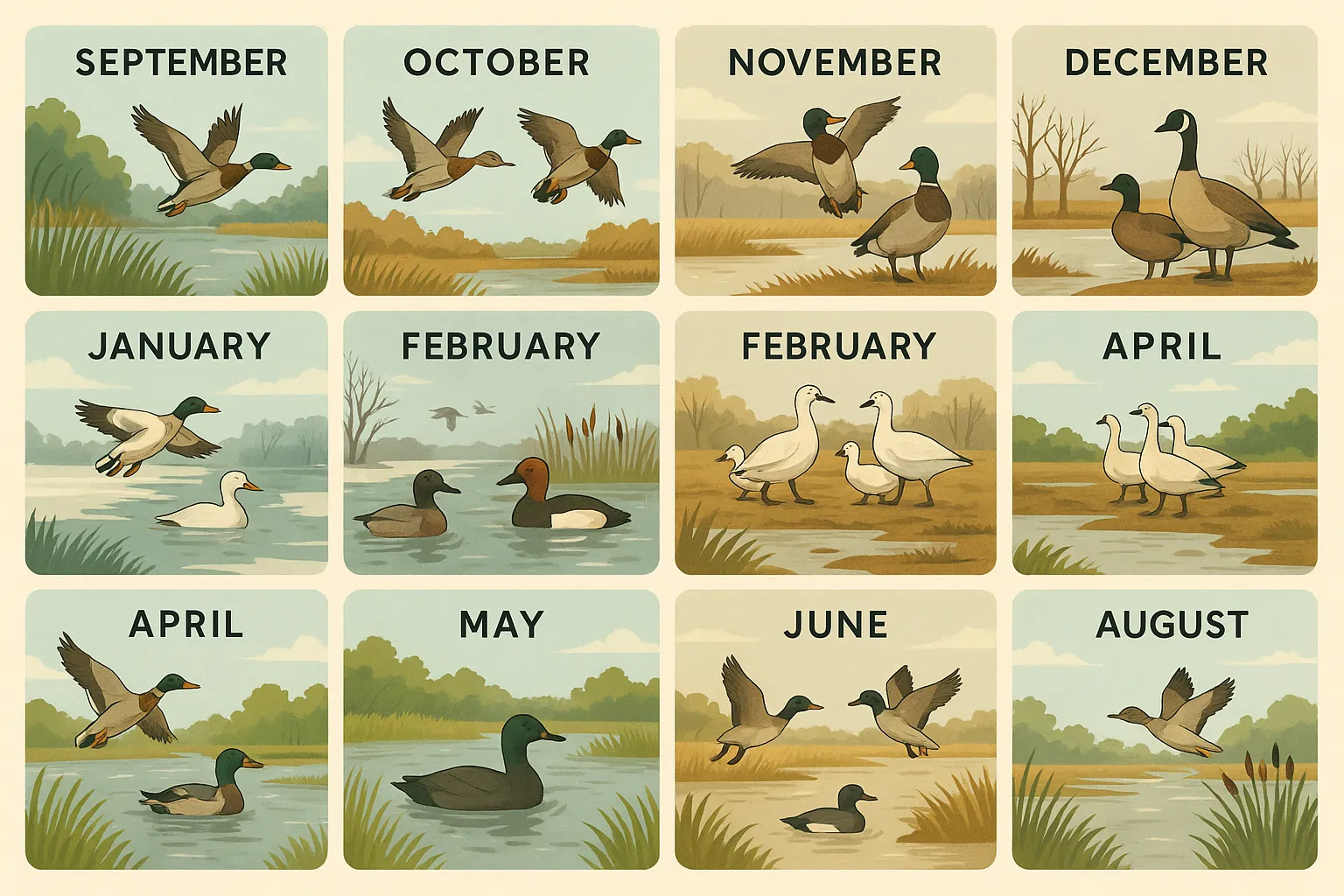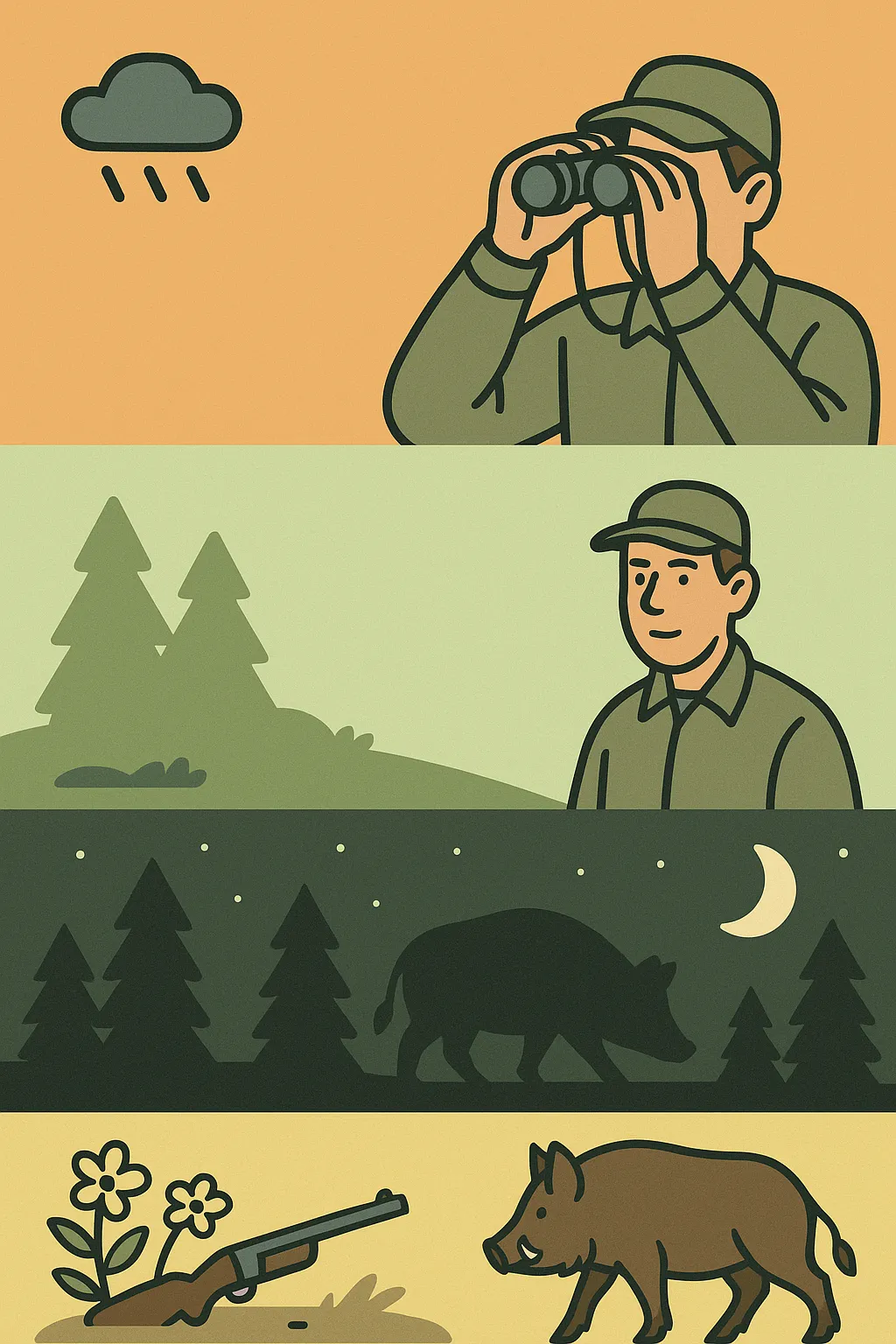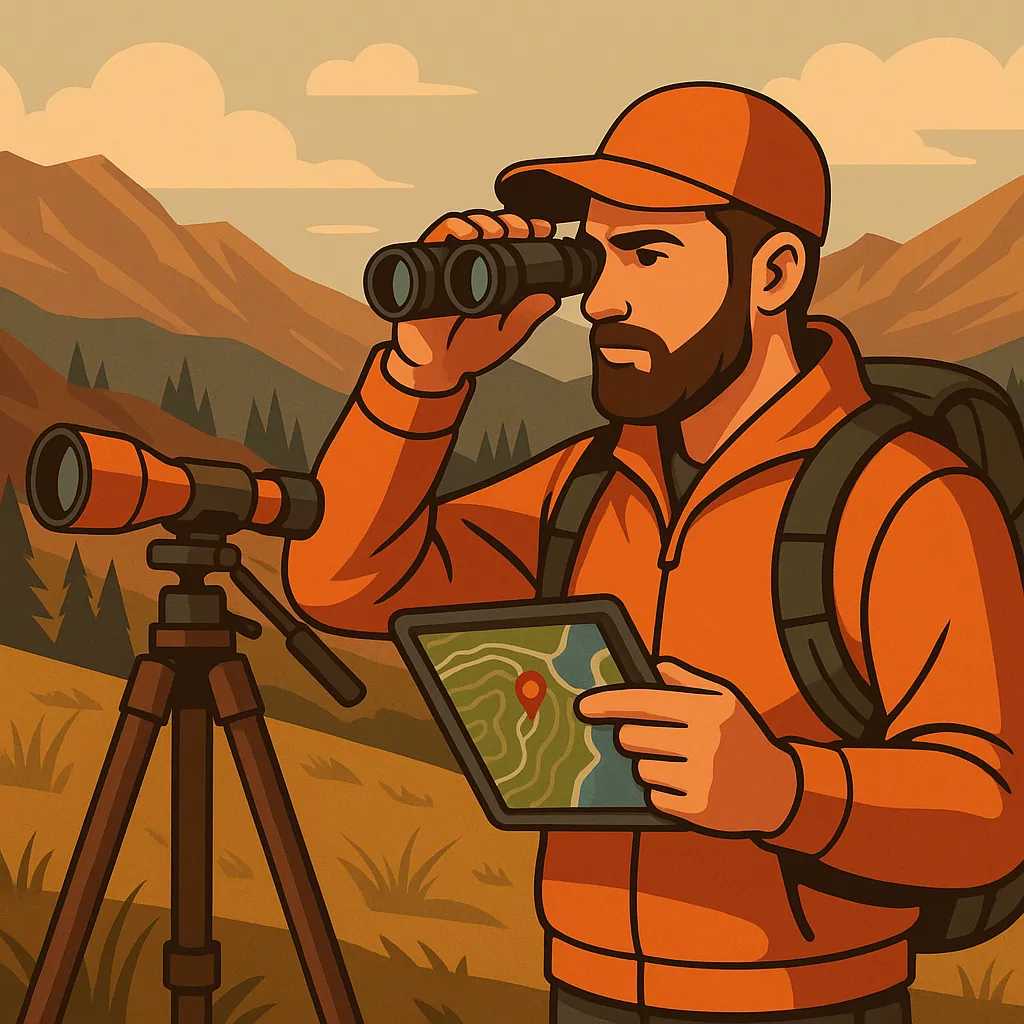
How to Hunt After a Cold Front: Pressure, Thermals & Movement
Cold fronts are nature’s reset button. When temperatures drop, winds shift, and barometric pressure spikes, game animals across North America respond—often dramatically. Whether you’re chasing whitetails, muleys, or predators, understanding how cold fronts affect thermals, animal behavior, and movement patterns can turn tough hunts into fast tags.
This is your post-front playbook: how to hunt smarter after a cold front using pressure changes, thermal mapping, and behavior shifts to your advantage.
🌬️ What Is a Cold Front and Why It Matters
🧠 Front Dynamics Overview:
-
A cold front is a mass of cold air displacing warmer air—often triggering abrupt weather changes
-
Winds often shift NW and barometric pressure rises behind the front
-
Temperature drops 10–30°F rapidly, changing animal metabolism and daylight movement
🎙️ “When the wind changes and the mercury drops, bucks get back on their feet. It’s the perfect reset window.”
— Todd M., Iowa
🧭 Phase One: Thermals After the Front
🌡️ What Changes:
-
Morning thermals still rise, but cold air lingers in low spots
-
Evening thermals drop earlier and harder as temps fall
-
Wind shifts dominate early, then settle—ideal for midday stalks
📍 Tactics:
-
Set up above bedding for the morning—let rising thermals carry scent away
-
Hunt midday benches and crossings with stable pressure and shifting thermals
-
Use a wind puffer and milkweed to constantly test micro-currents
🎯 Best Gear:
-
Compact wind checker bottle or milkweed floss
-
OnX, HuntStand, or BaseMap for terrain + wind mapping
-
Softshell or Merino layers for quiet, mobile setups
🎙️ “The thermal shift at 10AM let me circle in on a saddle without my scent dumping down. The buck was bedded 40 yards off.”
— Caleb S., Kentucky
📉 Phase Two: Pressure = Predictability
🔼 Barometric Pressure Impact:
-
Post-front pressure often spikes above 30.10 inHg—a major movement trigger
-
Deer, hogs, coyotes, and elk tend to move more during and right after this pressure climb
-
Birds drop altitude. Predators move early. Ungulates leave beds sooner.
📍 Tactics:
-
Hunt the first clear day after the storm—particularly the first 24–36 hours
-
Focus on sunlit slopes and southern exposures in winter hunts
-
Glass late mornings—animals feed late and bed closer than expected
🛠️ Use This Tool:
-
Barometric Pressure Tracker (e.g., HuntWise, Weather Underground)
-
Set alerts for spikes above 30.00 inHg
🎙️ “Every time I see a 30.2 reading, I cancel meetings and hit the woods. You only get a few days like that per season.”
— John E., Arkansas
🦶 Phase Three: Movement & Feeding Response
📊 What You’ll See:
-
Pre-front = hunker down
-
Front arrival = hunker deeper
-
Post-front = move early, move far, feed hard
📍 Tactics:
-
Hunt field edges in the evening and trails near cover in the morning
-
Rifle hunt ridges and high points on clear post-front mornings
-
If snow fell: track, glass, and still-hunt on calm, sunny slopes
🎯 Go-To Setups:
| Species | Best Post-Front Spot | Why It Works |
|---|---|---|
| Whitetail | Staging area 100 yards off cut corn | Bucks re-enter feed routines |
| Mule Deer | Sun-facing rimrock benches | Movement starts later but longer |
| Hogs | Shady oak flats near water | Cool temps = day movement |
| Coyotes | Burned pasture edges | Hunt small game routes midday |
🎙️ “The wind was right, the barometer peaked, and we had a frost-covered clover field—two mature does walked in at 4:45PM.”
— Lauren J., North Mississippi
🧠 Pro Tips for Cold Front Success
✔️ Thermals Before Sunrise: Cold air pools in valleys—don’t let your scent fall with it.
✔️ Dress in Layers: You’ll walk cold but glass warm—prepare to adjust often.
✔️ Front Timing Beats the Moon: Ignore the full moon hype—watch the barometer.
✔️ Sit Longer Midday: Deer and elk often move during 10AM–2PM windows post-front.
✔️ Scout the “Warmest Cold Spot”: South-facing slopes, sunlit creek banks, protected benches
🎙️ “Cold fronts make every critter vulnerable, but only for a short window. If you’re not in the woods, you’ll miss the best day of the month.”
— Brent K., Tennessee
📦 Cold Front Gear Must-Haves
| Item | Why It Matters |
|---|---|
| Puffy vest or mid-layer | Adds insulation without bulk for static sits |
| Lightweight tripod + bino | For glassing post-storm movements on open slopes |
| Waterproof boots + wool socks | Mud, melt, and frost = foot soak without proper boots |
| Ballistic rangefinder | Crisp air distorts perceived distance—trust tech |
| Wind puffer / milkweed | Essential for reading changing thermals after storms |
📣 Resources & Reference Tools
-
Apps: HuntStand (Wind & Pressure Layers), Windy, BaseMap
-
Books: Jeff Murray’s Moon & Weather Whitetails, Cody Altizer’s Behavioral Hunts
-
Videos: The Hunting Public – Cold Front Success, Randy Newberg – Post-Storm Elk Plans
💡 Pro Tip: Cold fronts compress time and movement. Your job is to be positioned where deer or predators want to be before they even realize it.
🌟 Final Shot: Don’t Hunt the Cold—Hunt the Shift
Cold fronts don’t guarantee tags—but they tilt the odds. When pressure spikes, wind shifts, and thermals flip, animals hit patterns with short-term urgency. Hunters who understand timing, thermals, and terrain will always have the edge.
“If you know where the wind is going, and where the animals want to go—you’re already ahead.”
Leave A Comment
Related Posts
Hunting Waterfowl in the Mississippi Flyway: Monthly Breakdown The Mississippi […]
Southeastern Hog Hunting Tactics by Month Feral hogs in the […]
Western Big Game Scouting – E-Scouting and Elevation Timing In […]





